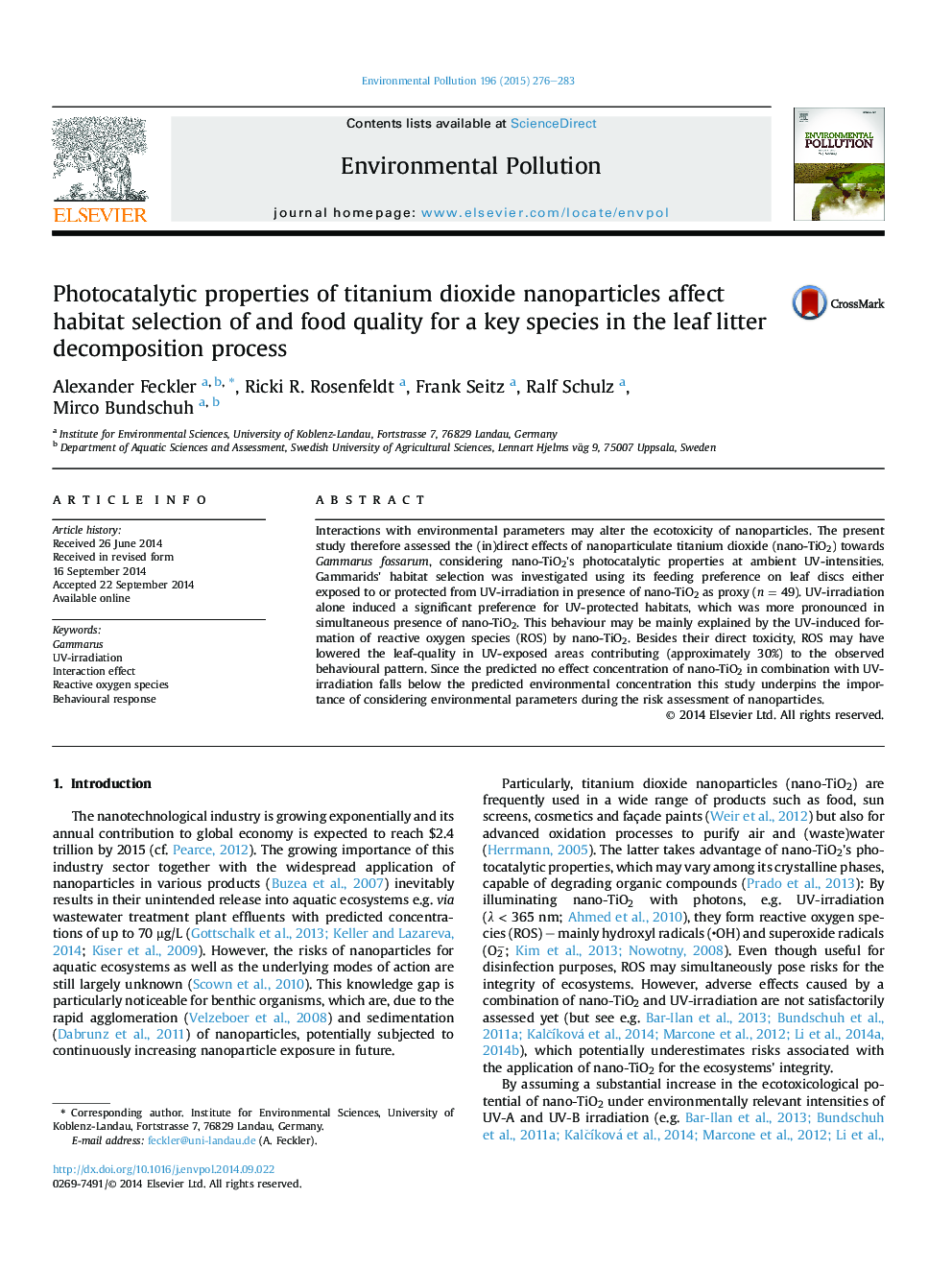| Article ID | Journal | Published Year | Pages | File Type |
|---|---|---|---|---|
| 6317934 | Environmental Pollution | 2015 | 8 Pages |
Abstract
Interactions with environmental parameters may alter the ecotoxicity of nanoparticles. The present study therefore assessed the (in)direct effects of nanoparticulate titanium dioxide (nano-TiO2) towards Gammarus fossarum, considering nano-TiO2's photocatalytic properties at ambient UV-intensities. Gammarids' habitat selection was investigated using its feeding preference on leaf discs either exposed to or protected from UV-irradiation in presence of nano-TiO2 as proxy (n = 49). UV-irradiation alone induced a significant preference for UV-protected habitats, which was more pronounced in simultaneous presence of nano-TiO2. This behaviour may be mainly explained by the UV-induced formation of reactive oxygen species (ROS) by nano-TiO2. Besides their direct toxicity, ROS may have lowered the leaf-quality in UV-exposed areas contributing (approximately 30%) to the observed behavioural pattern. Since the predicted no effect concentration of nano-TiO2 in combination with UV-irradiation falls below the predicted environmental concentration this study underpins the importance of considering environmental parameters during the risk assessment of nanoparticles.
Related Topics
Life Sciences
Environmental Science
Environmental Chemistry
Authors
Alexander Feckler, Ricki R. Rosenfeldt, Frank Seitz, Ralf Schulz, Mirco Bundschuh,
